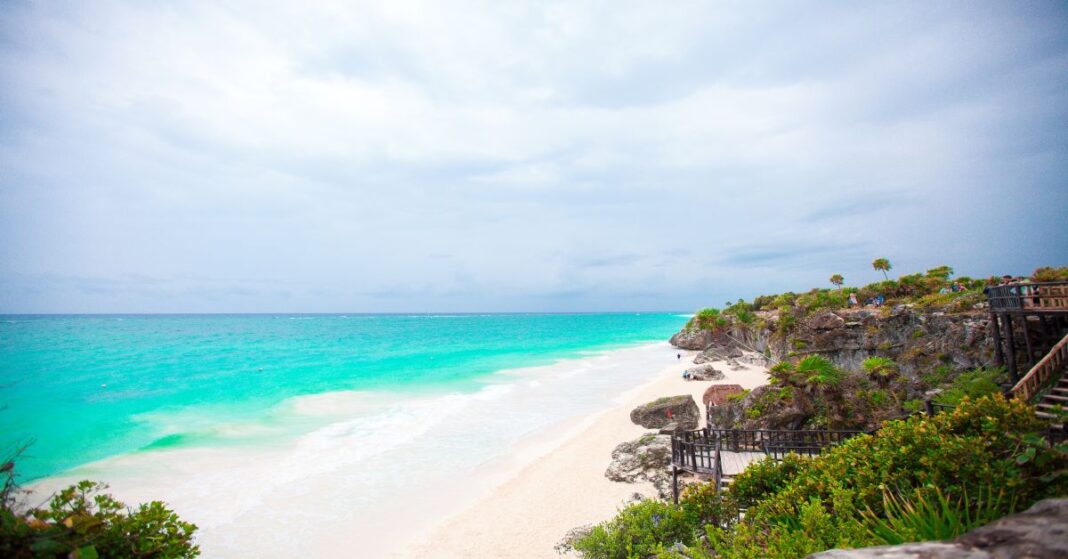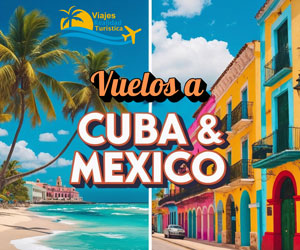The Riviera Maya is not only famous for its paradisiacal beaches and luxury resorts but also for its extraordinary cultural heritage, including some of Mexico’s most important Mayan archaeological sites. These ancient cities, which flourished long before European colonizers arrived, are living testimonies to the grandeur of the Mayan civilization. Travelers who visit the region have a unique opportunity to walk the same paths as the ancient Mayans, learn about their history, admire their architecture, and at the same time enjoy the stunning natural surroundings.
1. Tulum: The Mayan Treasure by the Sea
One of the most iconic sites in the Riviera Maya is undoubtedly Tulum. Located on a stunning cliff overlooking the Caribbean Sea, Tulum is one of the few Mayan cities built next to the ocean, giving it a unique character. Founded around 1200 AD, Tulum was an important trading port for the Mayan empire and a strategic point for maritime commerce.
The Tulum archaeological site is relatively small compared to other Mayan cities, but its appeal lies in its breathtaking coastal location. Visitors can explore structures such as El Castillo, one of the tallest and most prominent buildings, which likely served as a lighthouse for sailors. Other noteworthy structures include the Temple of the Frescoes, famous for its well-preserved reliefs and murals, and the Temple of the Descending God. After exploring the ruins, visitors can descend to the turquoise waters of the beach below, creating the perfect combination of history and relaxation.
2. Cobá: Mystery and Adventure in the Jungle
For those interested in adventure and archaeology, Cobá is a must-visit. Located deep in the jungle, about 40 kilometers from Tulum, Cobá was one of the largest Mayan cities in its heyday. What makes Cobá special is the opportunity to climb the Nohoch Mul pyramid, one of the tallest in the Yucatán Peninsula, offering an impressive panoramic view of the jungle stretching to the horizon.
This archaeological site was a political and commercial hub between 500 and 900 AD, and it featured a complex network of stone roads connecting different parts of the city. Visitors can rent bicycles or take bicycle taxis to explore the ruins and discover stelae containing hieroglyphs that narrate the city’s history. The experience of venturing into the jungle to uncover ancient temples and pyramids offers a sense of adventure few other sites can match.
3. Chichén Itzá: Wonder of the Modern World
Although situated slightly outside the Riviera Maya, no discussion of Mayan culture is complete without mentioning Chichén Itzá, one of the New Seven Wonders of the World. Located about two hours from the Riviera Maya, Chichén Itzá is one of Mexico’s largest and best-preserved archaeological sites. This city was a major political and religious center for the Mayans during the Terminal Classic period (600–900 AD).
The most famous monument in Chichén Itzá is the Pyramid of Kukulkán, also known as El Castillo, a pyramid structure that reflects the Mayans’ deep knowledge of astronomy. During the spring and fall equinoxes, a play of light and shadow gives the illusion of a serpent descending the pyramid’s steps, representing the god Kukulkán. Other notable landmarks within Chichén Itzá include the Ball Court, the Temple of the Warriors, and the Sacred Cenote, used for ritual sacrifices.
In addition to its historical and cultural significance, Chichén Itzá has been recognized as a UNESCO World Heritage site and is one of the most visited destinations in Mexico. This site offers an immersive experience into the grandeur of the ancient Mayan empire, and its vastness and monumental scale continue to awe visitors today.
4. Muyil: The Mysticism of Mayan Canals
For travelers interested in a quieter and less crowded experience, the Muyil archaeological site is an excellent option. Located within the Sian Ka’an Biosphere Reserve, Muyil was one of the oldest cities in the region, founded around 300 BC. Although it is a smaller and lesser-known site, Muyil offers a peaceful walk through jungle-covered pyramids and paths leading to a freshwater lagoon connected to the Caribbean Sea via ancient Mayan canals.
One of the most attractive aspects of Muyil is that visitors can combine the archaeological exploration with a boat tour through the canals of crystal-clear water, once used by the Mayans for trade. This tour through the canals, surrounded by mangroves and jungle, provides a different perspective on the Mayan legacy, allowing visitors to experience the pristine nature of the region alongside its history.
5. Ek Balam: The City of the Black Jaguar
Another archaeological gem, though less known, is Ek Balam, whose name means “Black Jaguar.” Located north of the Riviera Maya, near the city of Valladolid, Ek Balam stands out for its majestic Acropolis, one of the largest and best-preserved structures in the region. Visitors can climb to the top of this pyramid, where they are rewarded with breathtaking views of the surroundings, and admire unique sculptures and reliefs decorating the temple’s entrance.
Ek Balam is also famous for its intricate reliefs depicting mythological and divine scenes, allowing archaeologists to learn more about the Mayans’ beliefs and worldview. Unlike more tourist-heavy sites, Ek Balam maintains a tranquil and intimate atmosphere, allowing visitors to fully enjoy the experience with fewer crowds.
In conclusion, the Mayan culture and archaeological sites offer travelers the opportunity to explore a millennia-old civilization that left a deep legacy in the history of Mexico and the world. From the towering temples atop the cliffs of Tulum to the intricate road networks of Cobá and the grandeur of Chichén Itzá, the Riviera Maya is a true paradise for history and archaeology enthusiasts. Moreover, the blend of natural landscapes and ancient Mayan cities offers a unique experience that combines cultural tourism with adventure and discovery.

















